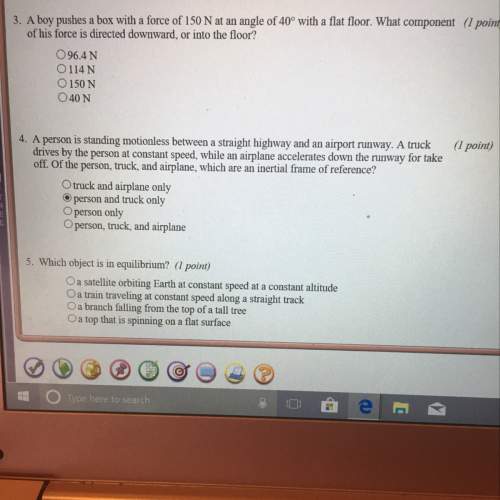
We are going to further assume that this is the size of the meteor as it strikes the ground. Whatever size it was before some of it burned up in the atmosphere, 300 m of it make it to the planet’s surface. We’ll also make a few other approximations as we go along. Note that these computations will require the (correct) use of scientific notation as the numbers will get rather big. You’ll need access to a scientific calculator that can do scientific notation and non-integer powers of numbers. (Windows-equipped computers have desktop calculators adequate to do these calculations if you don’t own a scientific calculator.)
Assuming this object (diameter=300 m) to be approximately spherical, what is the volume of this meteor? Remember that the volume, V, of a sphere is 4/3 π r3, where r is the radius. Remember that the radius of a sphere is half of its diameter. Show your work and your answer clearly, including the correct units of measure.
Calculate the mass, m, of this meteor. An appropriate density for an asteroid is 2400 kg/m3.And density is defined by mass/volume (that is, mass divided by volume). Knowing these two things and usingthe volume you just calculated, find the mass of our meteor in kg. Show your work and youranswer clearly, including the correct units of measure.
Diameter, d = 300m
Radius, r = 300/2 = 150m
Volume of spherical meteor = 4/3 π r^3 = (4/3)*π (150)^3 = 14137166.9412 meter^3 = 1.413x10^7 meter^3
Density D = mass/volume = 2400kg/m^3
Mass, m = D*Volume = 2400*1.413*10^7 = 3.39x10^10 Kg
Question 3: The energy that any meteor carries into a collision with the Earth is the meteor’s kinetic
energy. A reasonable speed for an asteroid running into Earth is 20 km/s. Kinetic energy can be calculatedfrom ½ m v2, where m is the mass (you calculated in Question 2) and v is the speed (NOT volume fromabove). Note that you need speed in m/s for this calculation in order for the kinetic energy (KE) to come outin units of joules. Remember that there are 1000 m in 1 km. Calculate the kinetic energy in joules (J) for thisimpending catastrophe. Show your work and your answer clearly, including the correct units of measure.

Answers: 1
Other questions on the subject: Physics


Physics, 22.06.2019 13:00, help1572
Aplayground merry-go-round has a radius of 4.6 m and a moment of inertia of 200 kg-m2 and turns with negligible friction about a vertical axle through its center. a child applies a 26.0 n force tangentially to the edge of the merry-go-round for 15.0 seconds. if the merry-go-round is initially at rest, how much work did the child do on the merry-go-round?
Answers: 1

Physics, 22.06.2019 23:00, itscheesycheedar
Astronomers studying the planet of rhombus have detected sedimentary rock on its surface. one astronomer wonders if material in this sedimentary rock used to be in igneous rock deep in rhombus’s interior. can igneous rock become sedimentary rock? explain your answer.
Answers: 1
Do you know the correct answer?
We are going to further assume that this is the size of the meteor as it strikes the ground. Whateve...
Questions in other subjects:


Mathematics, 01.12.2019 06:31



Mathematics, 01.12.2019 06:31



Spanish, 01.12.2019 06:31


History, 01.12.2019 06:31







